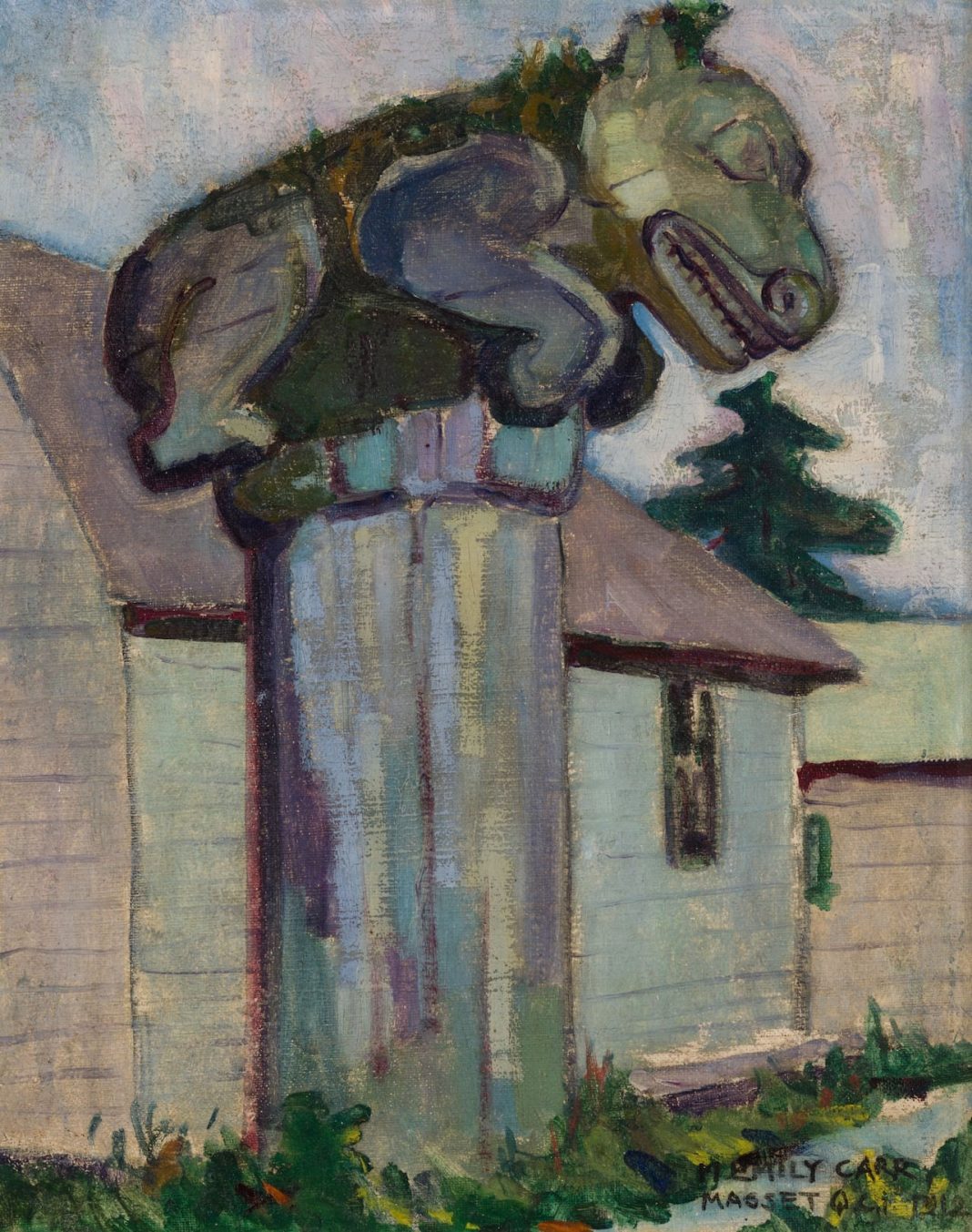In the world of art, the adage “one man’s trash is another man’s treasure” rings particularly true, as illustrated by the remarkable journey of a long-forgotten painting that has undergone a stunning transformation from obscurity to potential acclaim. This story begins in the Hamptons, where Allen Treibitz, a seasoned New York-based art dealer with over four decades of experience, made an extraordinary discovery at a seemingly ordinary barn sale.
Treibitz stumbled upon a captivating artwork depicting a carved grizzly bear atop a memorial totem pole, for which he paid a mere $50. Initially, he was unaware of the significance of the piece or the identity of its creator. However, a spark of curiosity led him to delve deeper into the origins of the painting, revealing that he had uncovered a lost work by Emily Carr, a prominent Canadian painter known for her evocative depictions of Indigenous culture and landscapes.
Treibitz’s research and subsequent consultation with David Heffel, the president of Canada’s Heffel Fine Art Auction House, confirmed his instincts. Heffel remarked, “We were provided photos, and there was no doubt in my mind that this was an exciting Cinderella discovery.” This revelation turned the painting, titled “Masset, Q.C.I.,” into a treasure valued between $100,000 and $200,000, a staggering leap from its purchase price.
The significance of this artwork goes beyond its monetary value. Painted in 1912, Carr’s piece serves as a poignant documentation of British Columbia’s First Nations heritage. It depicts an Indigenous memorial post that stood in Masset, a village on the Haida Gwaii archipelago, highlighting Carr’s dedication to preserving and honoring the artistic traditions of Indigenous communities during a time when such expressions were often marginalized.
Interestingly, the painting’s history adds another layer of intrigue. It is believed to have been gifted by Carr to friends in the 1930s, only to remain hidden away in a barn for decades, untouched and unappreciated. Heffel noted that the artwork had been preserved in its original frame and stretching, requiring only a gentle cleaning to restore its brilliance. This highlights the often-overlooked narratives behind art pieces that can remain dormant for years, waiting for someone with the right eye to recognize their value.
As the painting prepares to go to auction on November 20 in Toronto, Treibitz harbors hopes that it will find a new home in a museum or with a dedicated collector of Carr’s work. His sentiments reflect a broader truth in the art world: the importance of context and appreciation. He stated, “The fact that it was found and that it is back to its home place is very important.”
This story serves as a reminder of the hidden treasures that can exist in plain sight and underscores the critical role that art dealers and collectors play in preserving cultural heritage. It is a testament to the idea that art can transcend time and place, offering insights into our shared history. Indeed, Treibitz’s extraordinary find not only enriches his own narrative but also contributes to the ongoing dialogue about the value of Indigenous art and the importance of recognizing and celebrating the voices that have shaped our artistic landscape.
As we await the auction, one thing is clear: this painting is no longer just a relic of the past; it is a vibrant connection to a rich cultural heritage, destined to inspire future generations.

